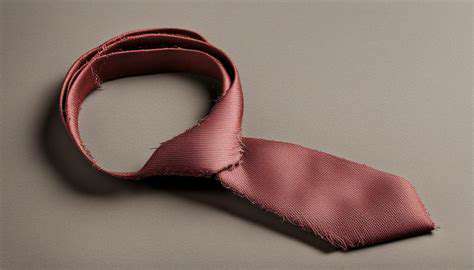How to make your wooden furniture last a lifetime
Initial Inspection and Assessment
Before starting any maintenance, a detailed inspection is essential. Examine every inch of the piece carefully, looking for cracks, splinters, or loose joints. Take note of the wood type since different woods demand different care approaches. Documenting the original condition helps create a tailored maintenance plan and catches potential issues early. This first evaluation sets the foundation for preserving your furniture's beauty and structural integrity for decades.
Cleaning and Dusting
Frequent dusting prevents buildup that can cause discoloration and long-term damage. Opt for a soft microfiber cloth or feather duster to remove surface dust. For tougher grime, lightly dampen your cloth without oversaturating the wood. Never use harsh chemicals or abrasive tools that could strip the finish. Gentle, consistent cleaning maintains the piece's original luster and prevents premature aging.
Protecting Against Moisture
Wood naturally reacts to humidity changes, making climate control vital. Position furniture away from direct sunlight, radiators, and damp areas like basements. Extreme temperature swings cause warping and cracking - the silent killers of fine woodwork. Investing in a hygrometer helps monitor room humidity, allowing you to adjust conditions before damage occurs.
Addressing Minor Repairs
Small issues become big problems when ignored. Tighten loose joints immediately using wood glue and clamps. Fill hairline cracks with color-matched filler before they expand. Proactive repairs add years to your furniture's lifespan while maintaining its structural stability and visual appeal.
Regular Polishing and Refinishing
A quality wax or oil polish nourishes wood while protecting its surface. Apply products sparingly following grain patterns for optimal absorption. When finishes show significant wear, professional refinishing restores protection and beauty. Think of refinishing as preventative medicine for your furniture - it addresses surface damage before it penetrates deeper layers.
Understanding Wood Characteristics
Each wood species has unique properties affecting care requirements. Oak withstands moisture better than pine, while teak resists insects naturally. Research your furniture's wood type to develop an appropriate care regimen. This knowledge helps you anticipate potential issues and select the right preservation methods.
Professional Consultation
For heirloom or high-value pieces, seek expert advice annually. Conservators spot early warning signs untrained eyes miss and recommend specialized treatments. Their expertise often prevents irreversible damage, preserving both monetary and sentimental value for future generations.
Moisture Management: The Silent Enemy of Wood
Wood's Natural Behavior
Wood constantly adjusts to environmental moisture, expanding and contracting with humidity changes. This hygroscopic nature makes climate control essential. Ignoring moisture fluctuations guarantees eventual damage - from subtle warping to catastrophic cracking. Understanding this dynamic helps implement effective protection strategies.
Humidity's Impact
High humidity causes swelling that stresses joints and finishes. Low humidity leads to shrinkage and cracking. Consistent 45-55% relative humidity creates the ideal preservation environment. Seasonal changes require adjustments - humidifiers in winter, dehumidifiers in summer - to maintain this balance.
Environmental Control
Strategic furniture placement significantly reduces moisture risks. Avoid exterior walls where temperature varies most. Use breathable fabric covers rather than plastic during storage. Elevate pieces slightly off concrete floors to prevent moisture wicking from below. These simple measures dramatically improve wood stability.
Water Damage Prevention
Immediate action prevents permanent water marks. Blot spills instantly with absorbent cloths. For stubborn rings, apply a paste of baking soda and mineral oil before gently buffing. Never let liquids sit on wood surfaces - even water leaves permanent marks when absorbed.
Protective Treatments
Quality sealants create moisture barriers without suffocating wood. Oil-based finishes penetrate deeply while polyurethanes form protective surface layers. Reapply protective coatings before they fully wear to maintain continuous protection against humidity changes.
Addressing Everyday Wear and Tear: Simple Strategies

Preventive Maintenance
Consistent care prevents most major repairs. Establish a quarterly maintenance routine including inspection, cleaning, and minor adjustments. High-traffic pieces may need monthly attention. This investment of time pays dividends in extended furniture life.
Recognizing Early Warning Signs
Subtle changes often precede major damage. Listen for new squeaks when opening drawers. Notice if doors no longer align properly. These small symptoms indicate developing issues that simple adjustments can resolve before worsening.
Proper Cleaning Techniques
Dust with the grain using electrostatic cloths that trap particles. For deeper cleaning, use pH-balanced wood cleaners. Avoid silicone-based polishes that build up over time, instead choosing natural beeswax or carnauba-based products.
Timely Repairs
Address loose hardware immediately with proper screwdrivers to prevent stripped holes. Stabilize wobbly legs with furniture pads before uneven stress causes cracks. Prompt attention to minor issues prevents exponential damage and maintains structural integrity.
Professional Assessments
Annual inspections by furniture specialists catch developing problems. They can recommend appropriate treatments for specific woods and finishes. Their trained eyes spot issues most owners miss until visible damage occurs.
Mastering fundamentals ensures lasting results. For wooden furniture, this means understanding materials, recognizing early warning signs, and implementing consistent care. Quality pieces deserve quality maintenance - the difference between temporary ownership and multi-generational heirlooms.

- Maximizing the Lifespan of Hardwood Floors: Tips for Enhanced Durability
- How to enhance your garden with wooden furniture sets
- How to decorate your home with wooden furniture accents
- The best wood types for furniture that lasts
- Best wooden furniture options for rental apartments
- The best wooden furniture for creating a comfortable home office
- Top tips for organizing your home with wooden storage units
- Tips for buying wooden furniture for a beach house
- How to make a statement with large wooden furniture pieces
- The most popular wood types for mid century modern furniture
- How to choose a wooden chair for maximum comfort
- Why reclaimed wood is perfect for creating a vintage look